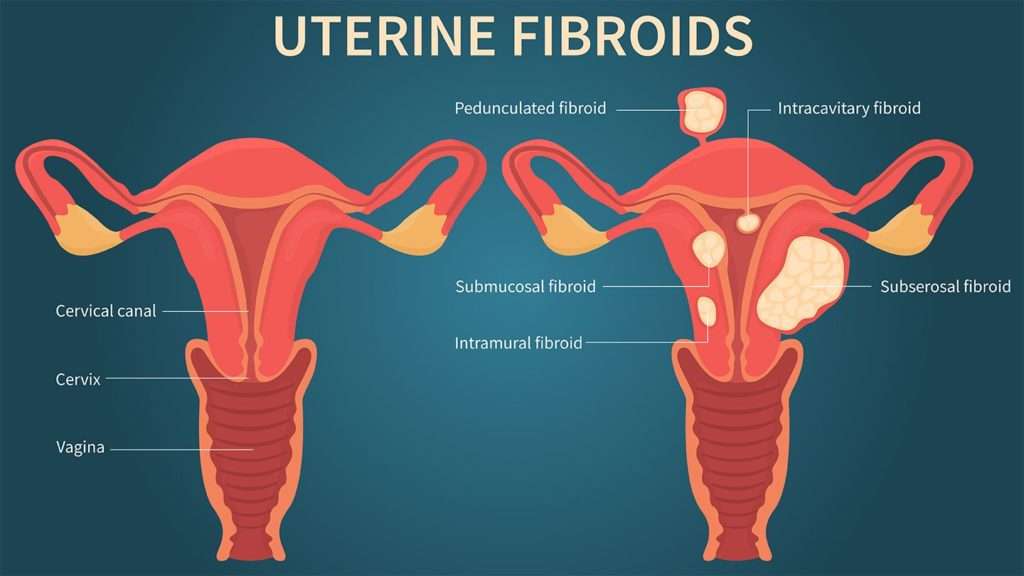Treatment for fibroids at HeyPills includes our specially formulated homeopathic treatment protocol to cure fibroids. Speak to our specialist today for a detailed evaluation.
The treatment protocol has been developed after exhaustive in-house research. Our clinics consult for more than 7,500 patients with fibroids globally every year. You too can benefit from our tried-and-tested treatment of fibroids.
Why HeyPills Treatment For Fibroids?
- HeyPills Homeopathy medicine for fibroids is known to reduce the size of fibroids very fast,
- The treatment can reduce bleeding, pain, and discomfort due to fibroids,
- There are fewer chances of recurrence of fibroids after treatment,
- Non-surgical, non-hormonal safe treatment without any ill effects,
- Reverses other complications of fibroids like infertility etc.
Call +91 9999064336 to book an appointment or consult and order online.

What Are Fibroids?
Uterine fibroids are noncancerous growths that develop in or just outside a woman’s uterus (womb).
Uterine fibroids develop from normal uterus muscle cells that start growing abnormally. As the cells grow, they form a benign tumour.

Another medical term for fibroids is “leiomyoma” or just “Myoma”.
Fibroids are almost always benign (not cancerous).
Fibroids can grow as a single tumour, or there can be many of them in the uterus. They can be as small as an apple seed or as big as a grapefruit. In unusual cases, they can become very large.
Fibroids are most common in women in their 40s and early 50s. Not all women with fibroids have symptoms.
Causes of Fibroids
Fibroids can grow:
- In the muscle wall of the uterus (myometrial)
- Just under the surface of the uterine lining (submucosal)
- Just under the outside lining of the uterus (subserosal)
- On a long stalk on the outside of the uterus or inside the uterus (pedunculated)
Who Gets Fibroids?
There are factors that can increase a woman’s risk of developing fibroids.
- Age. Fibroids become more common as women age, especially during the 30s and 40s through menopause. After menopause, fibroids usually shrink.
- Family history. Having a family member with fibroids increases your risk. If a woman’s mother had fibroids, her risk of having them is about three times higher than average.
- Ethnic origin. African-American women are more likely to develop fibroids than white women.
- Obesity. Women who are overweight are at higher risk for fibroids. For very heavy women, the risk is two to three times greater than average.
- Eating habits. Eating a lot of red meat (e.g., beef) and ham is linked with a higher risk of fibroids. Eating plenty of green vegetables seems to protect women from developing fibroids.
Symptoms of Fibroids
Most fibroids do not cause any symptoms, but some women with fibroids can have:
- Heavy bleeding (which can be heavy enough to cause anaemia) or painful periods
- A feeling of fullness in the pelvic area (lower stomach area)
- Enlargement of the lower abdomen
- Frequent urination
- Pain during sex
- Lower back pain
- Complications during pregnancy and labour, including a six-time greater risk of cesarean section
- Reproductive problems, such as infertility, which is very rare.
Often, one can have fibroids and not have any symptoms. The health care providers may find them during a physical exam or another test. Fibroids often shrink and cause no symptoms in women who have gone through menopause. A recent study also showed that some small fibroids shrink in premenopausal women.
Pregnancy and Fibroids
Women who have fibroids are more likely to have problems during pregnancy and delivery. This doesn’t mean there will be problems. Most women with fibroids have normal pregnancies. The most common problems seen in women with fibroids are:
- Cesarean section. The risk of needing a c-section is six times greater for women with fibroids.
- The baby is breech. The baby is not positioned well for vaginal delivery.
- Labour fails to progress.
- Placental abruption. The placenta breaks away from the wall of the uterus before delivery. When this happens, the fetus does not get enough oxygen.
- Preterm delivery.
Complications of Fibroids
- Severe pain or very heavy bleeding that needs emergency surgery
- Twisting of the fibroid. This can cause blocked blood vessels that feed the tumour. You may need surgery if this happens.
- Anaemia (not having enough red blood cells) from heavy bleeding
- Urinary tract infections: If the fibroid presses on the bladder, it can make it hard to empty your bladder completely.
- Infertility, in rare cases.
If you are pregnant, there’s a small risk that fibroids also may cause complications:
- You may deliver your baby early because there is not enough room in your womb.
- If the fibroid blocks the birth canal or puts the baby in a dangerous position, you may need a c-section.
- You may have heavy bleeding right after giving birth.
Diagnosis of Fibroids
Uterine fibroids are frequently found incidentally during a routine pelvic exam. Your doctor may feel irregularities in the shape of your uterus, suggesting the presence of fibroids. If you have symptoms of uterine fibroids, your doctor may order these tests:
- Ultrasound – Uses sound waves to produce the picture. The ultrasound probe can be placed on the abdomen or it can be placed inside the vagina to make the picture.
- Magnetic resonance imaging (MRI) – Uses magnets and radio waves to produce the picture
- X-rays – Uses a form of radiation to see into the body and produce the picture
- Cat scan (CT) – Takes many X-ray pictures of the body from different angles for a more complete image
- Hysterosalpingogram (HSG) or Sonohysterogram – An HSG involves injecting x-ray dye into the uterus and taking x-ray pictures. A sono-hysterogram involves injecting water into the uterus and making ultrasound pictures.
Some cases might also need surgery to know for sure if you have fibroids. There are two types of surgery to do this:
- Laparoscopy – The doctor inserts a long, thin scope into a tiny incision made in or near the navel. The scope has a bright light and a camera. This allows the doctor to view the uterus and other organs on a monitor during the procedure. Pictures also can be made.
- Hysteroscopy – The doctor passes a long, thin scope with a light through the vagina and cervix into the uterus. No incision is needed. The doctor can look inside the uterus for fibroids and other problems, such as polyps. A camera also can be used with the scope.
Treatment for Fibroids
Most women with fibroids do not have any symptoms. For women who do have symptoms, there are treatments that can help.
Treatment for the symptoms of fibroids may include:
- Birth control pills to help control heavy periods
- Intrauterine devices (IUDs) that release hormones to help reduce heavy bleeding and pain
- Iron supplements to prevent or treat anaemia due to heavy periods
- Pain relievers such as ibuprofen or Naprosyn for cramps or pain
- Hormone therapy shots to help shrink fibroids (done only for a short time)
- Watchful waiting: You may have pelvic exams or ultrasounds every once in a while to check the fibroid’s growth
Surgery and procedures used to treat fibroids include:
- Hysteroscopy. This procedure can remove fibroids growing inside the uterus.
- Uterine artery embolization. This procedure stops the blood supply to the fibroid, causing it to shrink and die. This may be a good option if you want to have children in the future.
- Myomectomy. This surgery removes the fibroids from the uterus. This also may be a good choice if you want to have children. It won’t prevent fibroids from growing again.
- Hysterectomy. This surgery removes the uterus completely. It may be an option if you don’t want children, medicines do not work, and you cannot have any other procedures.








